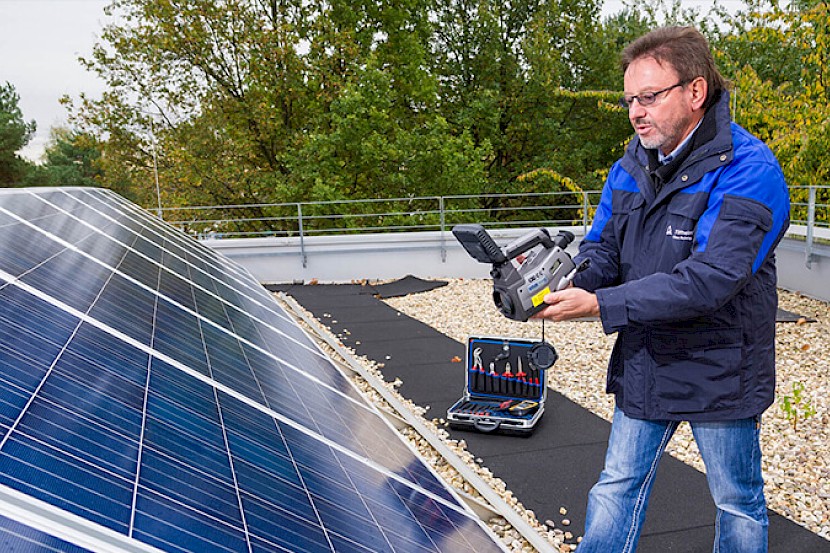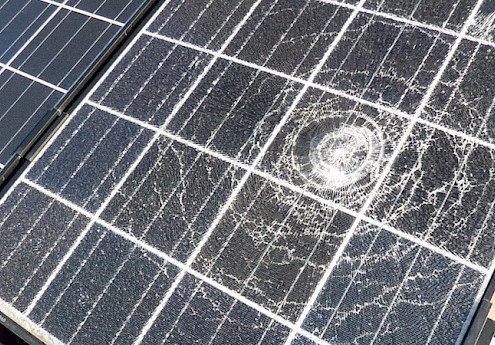
Photovoltaik maintenance
The maintenance requirement of photovoltaic systems is a topic that is discussed again and again. Some are of the opinion that photovoltaic maintenance is not necessary, others swear by regular service and maintenance. The fact is, you can't do without it, because in addition to the solar modules, the PV system also includes inverters, power storage (the battery), cabling and mounting system, and these are all exposed to different conditions.
Photovoltaic system maintenance - the most frequent questions and answers
Question 1 – Maintenance requirement photovoltaic
The maintenance requirements of photovoltaic systems always depend on the size of the individual system and its components. The issue of "maintenance of the solar system" in a single-family house with solar modules, inverters, cables, plugs and substructure but without storage must be viewed differently than in systems with lithium or lead storage. In the case of the latter storage systems in particular, attention must be paid to the level of liquids. In principle, photovoltaic systems should be checked at regular intervals. Even small solar systems without electricity storage should be checked every 2 – 3 years.
Question 2 – Photovoltaic maintenance contract
Whether you need a photovoltaic maintenance contract depends on your personal interests, your wallet and the size of your system. Basically, the less you personally take care of your solar system and the larger your system is, the more advisable a photovoltaic maintenance contract is. This should regulate the scope, frequency and costs of photovoltaic maintenance. For small systems up to 15 kWp, the maintenance costs are around 150 euros. For larger solar systems, the maintenance costs are calculated according to kWp. services such as B. the photovoltaic cleaning are usually not included.
Question 3 – Checklist photovoltaic maintenance
The maintenance contract for the photovoltaic system regulates which handling is checked on site. The photovoltaic maintenance checklist should always be individually tailored to the type of solar system. In addition to the visual inspection of the solar modules and cables, a measurement of the strings should always be part of the PV check. This can also be used to check non-visible areas, e.g. for insulation. The maintenance checklist also includes the secure seating of the substructure and the inspection of the inverters and power storage. In the case of inverters and storage systems, however, the manufacturer's individual specifications must always be observed.
Question 4 – Photovoltaic cleaning
Is it worth cleaning photovoltaic systems? Many operators ask themselves this question every year. In principle, photovoltaic systems are exposed to the weather 24 hours a day, 365 days a year. During this time, dirt settles on the solar modules. These are caused by bird droppings, exhaust fumes, dust, pollen etc. Whether rain and snow are sufficient to clean the photovoltaic modules always depends on the location of the system. This indicates whether the contamination is so severe that natural photovoltaic cleaning is sufficient.

Question 5 – Photovoltaic reparations
Photovoltaic repairs can also occur on low-maintenance systems. In addition to damage caused by storms or lightning and overvoltage, components can also become defective due to age. In the course of photovoltaic maintenance, for example, modules with broken glass, defective bypass diodes, defective inverters or batteries are noticed. If a defect or defect is identified, photovoltaic repairs should always be implemented promptly and after a prior offer in order to avoid unnecessary loss of earnings.
Question 6 – Solar specialist company for maintenance
In order for the photovoltaic maintenance to be carried out professionally, a specialist company with experienced solar technicians is necessary. Whether you hire a regional specialist company for maintenance or hire a national service provider depends entirely on your preferences. It is important that the service provider reacts quickly to errors and rectifies them effectively and cost-effectively.




